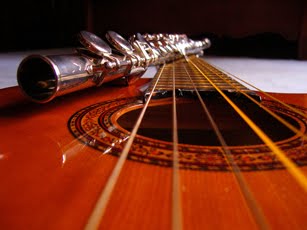
There is a proven, easy and inexpensive way to earthquake-proof your family and your possessions. Yes, truly there is and it has been around for centuries. How?
The answer came to me when I was reading yesterday’s Philippine Daily Inquirer’s section “Talk of the Town” on page A-10. There splashed on the page was an old, ink drawing (please see photo above) from the Illustrated London News, apparently on its August 29, 1863 issue, showing the destruction of the Danish Embassy in Manila in that year. The whole building is in shambles and mirrors the damage inflicted upon the UN headquarters in Haiti in the recent deadly Intensity-7 earthquake. Roof girders and beams pile up like “pick-up-sticks” in disarray while stone walls look like broken teeth, giving us an idea of the tremor’s devastating force. People carry the wounded and the dead while others evacuate their homes for safe grounds.
Yet, behind this bone-crunching view of nature’s cruel wrath lies a picture of how the ancient residents of these islands withstood the elements and triumphed to become the masters of their environment. It shows, beyond any doubt, something that we have failed to consider and preserve as a cultural legacy from our ancestors. And because of this failure, we have paid a steep price in terms of economic, social and engineering costs. What is this?
Beside the fallen Dutch Embassy still stands a bamboo-and-nipa house whose roof now seems to overshadow the exposed interiors of the embassy. If the native house suffered any major damage, the drawing barely shows it, but, on the contrary, proves modernity’s ironic inferiority to ancient designs and materials. Here, then, is an inkling into the story of our country’s sojourn as a free, self-governed and self-developed community of settlers whose domiciles and ways not just suited the climate but also took into account the destructive forces of nature. Our ancestors who came from neighboring Asian countries bequeathed us with ancient knowledge and wisdom we have somehow lost in less than half a century.
Typhoons have torn and blown away nipa roofings, we know this fact; but people always had a way to repair or replace them since the materials were almost always available within every locality. There were no hardware stores from which they could buy nipa or bamboo. More often than not, they made their own roofs, floors and walls. Filipino bamboo houses were genuine organic homes which provided the people not just with comfort and protection but also a living culture that kept them independent of any social or economic structures which enslaved them. Certainly, many may have eventually depended on skilled builders and traders to accomplish their construction and repair needs; but with the Bayanihan Spirit at work early on in these islands, building or rebuilding houses became a habitual community affair just as planting rice was. With bamboo, coconut and nipa plants growing all around them and providing almost everything one needed for a house – from roofing to walling, from flooring to posts and from windows to doors and stairs – the cost of putting up a house was minimal, if not, negligible as nature, in those times, cared for humans, and vice versa.
The Bayanihan or Community Spirit nurtured a culture wherein humans cared for other humans. A decent and livable house was a gift of the community to each and every new family that rose in its midst. Building and owning a house, then, was a family’s priceless inheritance from an ancient way of life and also a social contract to pay it forward to others who came after it. In that way, no one owned exclusively a house since the entire community pitched in to build it. Nature provided the materials as well as the land upon which the house stood. If nature decided to take the house back through disasters like typhoons or fires, the community offered sacrifices in order to appease heaven and to seek a way to rebuild or to relocate the community. In this way, the natives learned to live and survive in these islands.
For centuries, the bamboo-and-nipa house served as the shelter for many generations of Filipinos in a seemingly endless march. Many of our own aged parents still living now, with a few exceptions, lived in one. Hence, the picture of a bamboo house surviving a strong earthquake speaks thousands of words to us modern, city-dwellers who suffer the summer months inside steel-roofed, concrete houses with small windows that barely let the air in. Yes, we have learned to make them strong enough to withstand storms and quakes but at such a high price. The backlog in housing only shows that we have an impractical and onerous social, economic and engineering solution to a problem that we have so far failed to address completely and rightly. This is what happens when we turn our backs on our past.
Imagine, for instance, if Haitians had built bamboo houses instead of brick or concrete ones. Would there have been 150,000 people dead? Imagine if we had continued to give the honor we once gave bamboo houses for centuries, how much less would be the backlog in housing construction now? How many people would not be living in shanties in cities? How many people would have livelihood in the villages, planting and trading bamboo, coconut and nipa construction materials, not to mention other handicrafts and essential coconut products like copra and lumber? How much will we save from not importing construction materials if we had developed and engineered bamboo materials the way the Indians and Vietnamese have? (They sell bamboo houses to Hawaii from $15,000 to $45,000 or more for a single house kit. We can’t even allow a family to build a bamboo house inside a city subdivision for P50,000 because of impractical ordinances. Living in a bamboo house suddenly became a pitiful idea or sight even to us!)
This is not to say we should build bamboo houses everywhere. It is merely to say: Let us give back the respect we took away for our ancient, proven and practical ways. Yes, we dream of living in a California-style bungalow or a Swiss-chattel house, fine and dandy. We end up using so much energy air-conditioning it that we have ended up making our cities heat-sinks doing so because of the amount of concrete and steel we use instead of the less heat-absorbent bamboo, wood and nipa.
Yes, bamboo and nipa may burn easily. But so do all the wood and other synthetic materials we use in our modern houses. Fires occur not because we use wood or bamboo but because we do not take proper safety precautions. Building regulations have succeeded in discriminating against the bamboo house in cities and towns to the point of disregarding its versatility, adaptability and its acceptability as the prime symbol of our capacity to survive and to live in harmony with Nature.
The picture of the Danish Embassy in disarray beside a tall, proudly standing bamboo-and-nipa house after an earthquake tells a very convincing story that our housing officials must heed. It speaks not only of a way of surviving in these financially-challenged times but also of restoring the dignity in our social, cultural and environmental heritage. It presents an opportunity for us to utilize materials that are not just renewable but are also organically produced, thus benefitting the environment, and locally available, thus serving our economic needs. Finally, it showcases forms and designs that contain our original and authentic identity as a unique, free people.
What ultimately resulted when we neglected our precious architectural heritage by embracing and espousing external influences was our habit of conforming more and more to impractical and expensive methods of building homes and altering our environment, thus, making us forget the most fundamental principle of nature: growing and living with the environment. Today, we have cement plants run mostly by multinationals that scour our mountains in order to provide us with a durable construction material whose strength depends almost totally on another material that is more expensive than many basic commodities per unit of weight: steel.
When the Americans arrived in these islands in the early 1900’s, they introduced lumber as a new major construction material. This sounded the death knoll of bamboo as the primary source for building homes as well. After the Second World War, they introduced reinforced concrete and eventually led to the ultimate death of the bamboo houses in the cities and towns. Today, we hardly have any bamboo houses standing that date back to the American Occupation. In our rush to become modern and industrialized, we forgot to make use of a material that would have made us remain a self-sufficient nation capable of providing homes even to the least of our citizens. The pride we had upon what our ancestors practiced for centuries, we cannot even bestow upon ourselves as we see thousands and thousands of our fellow citizens dwelling in crowded slum areas inside shanties made of old galvanized-roofing walls, used-plywood flooring, recycled tin-doors, cardboard partitions and plastic-sheet windows and awnings.
Our ancestors would cry in astonishment to see us at this stage in modern civilization and say: “What a foolish people! They saw something from afar and copied it when right there in their backyard is what they need to live a happy and proud life in their homeland.”
Some would say it is a matter of taste and quality. Yeah, tell that to the millions of city-slum dwellers who could have been planting or raising their food and also their housing materials in the provinces if we had not given up on the essential and traditional Asian home: the Bamboo House. An earthquake may not easily destroy a concrete house; but neither will it easily destroy a bamboo house. A community of sturdy concrete houses may look modern and progressive; but a village of bamboo houses can be exotically stylish and even be more viable through a system that provides sources for construction materials, food and livelihood.
Calamities teach us a lot of things. But the greatest calamity that can happen to a people occurs when they can no longer learn to value the proven, ancient paths.
(The writer is presently working on a book entitled Bamboo House: The Essential Asian House.)

